Every educational leader understands that recognizing student achievement matters profoundly. Recognition validates the countless hours students invest in learning, practicing, and growing. It communicates institutional values by highlighting accomplishments the school community considers worthy of celebration. It creates visible success stories that inspire peers to pursue their own excellence. Recognition transforms abstract concepts like “academic achievement” or “good character” into concrete examples embodied by real students whom peers know and respect.
Yet many schools struggle with recognition programs that feel stale, exclusive, or ineffective. The same small group of high-achieving students receives awards year after year while most students never experience public acknowledgment. Recognition focuses narrowly on traditional academics or athletics, leaving students with other talents feeling invisible. Physical displays overflow with plaques and trophies, creating storage problems while recognition from years past sits forgotten in dusty trophy cases. Awards ceremonies become tedious obligations rather than genuine celebrations that resonate with the school community.
Effective school achievement recognition in 2025 requires fresh approaches that balance tradition with innovation, honor diverse types of excellence, engage digital-native students through modern platforms, create inclusive systems where recognition feels achievable, and preserve achievements in ways that inspire current and future students. This guide examines every dimension of successful recognition programs from establishing meaningful categories and transparent criteria to leveraging interactive digital displays and measuring long-term program impact on school culture.
Understanding Why School Achievement Recognition Matters
Before implementing specific recognition strategies, understanding the psychological and cultural foundations that make recognition truly effective helps ensure efforts create genuine motivational impact rather than empty rituals.
The Psychology Behind Effective Recognition
Recognition powerfully influences student motivation, behavior, identity development, and academic engagement when implemented thoughtfully. Educational psychology research consistently demonstrates several key principles about what makes recognition truly motivational.
Recognition Must Balance Standards and Accessibility: Awards programs face inherent tension between maintaining meaningful standards and creating accessible opportunities. Recognition requiring impossible standards that only the same few students can achieve becomes discouraging rather than motivating for most students. Conversely, indiscriminate recognition lacking substantive standards devalues genuine achievement. Effective programs establish clear, meaningful criteria while creating multiple pathways enabling diverse students to earn recognition through different forms of excellence.
Recognition Should Celebrate Process Alongside Product: Research on growth mindset versus fixed mindset thinking reveals important implications for recognition design. Recognition emphasizing natural talent or innate ability paradoxically undermines motivation by suggesting success depends on gifts students cannot control. More effective recognition celebrates effort, strategies, persistence, improvement, and processes leading to success. When students understand that recognized peers achieved success through approaches they could employ, recognition becomes inspirational rather than discouraging.

Recognition Patterns Communicate Institutional Values: Public recognition signals what schools truly value regardless of stated mission statements. When recognition consistently focuses only on academic test scores or athletic championships, schools communicate that nothing else matters comparably. When recognition celebrates diverse achievements across academics, character, arts, athletics, service, leadership, and other domains, schools demonstrate that excellence takes many forms. Students pay more attention to who receives recognition than to speeches about school values.
Recognition Timing Significantly Impacts Effectiveness: Immediate recognition when achievements occur carries far greater motivational impact than delayed recognition weeks or months later. Real-time or near-real-time acknowledgment demonstrates that schools actively notice accomplishments and value them enough to celebrate quickly. Traditional recognition approaches requiring physical plaque production and installation typically involve significant delays. Modern digital recognition displays enable timely acknowledgment impossible with conventional approaches, allowing schools to celebrate achievements while they remain fresh and meaningful.
How Recognition Shapes School Culture
School culture emerges from countless daily interactions, communications, and visible symbols. Recognition programs significantly influence culture by establishing norms, reinforcing values, creating shared narratives, and building collective identity.
Creating Achievement-Oriented Norms: Visible recognition of academic effort, intellectual curiosity, and scholarly achievement helps establish norms that prioritize learning. When students consistently see peers recognized for academic excellence, studying and scholarly engagement become socially valued behaviors rather than activities that carry social stigma. Recognition shapes peer culture in ways that either support or undermine educational missions.
Building Collective Pride: Recognition programs contribute to school pride when they showcase genuine accomplishments worthy of celebration. Schools with strong recognition traditions develop reputations for excellence that current students feel proud to uphold. Alumni maintain strong connections to institutions that celebrated their achievements, creating intergenerational bonds that strengthen school communities across decades.
Establishing Role Models: Recognized students become visible role models demonstrating that achievement is possible and valued. For younger students, seeing slightly older peers receive recognition provides accessible examples of success rather than abstract ideals. Role model effects prove particularly powerful when recognition includes diverse students from various backgrounds, demonstrating that excellence is achievable regardless of circumstances.

Creating Shared Stories: Recognition programs generate stories that communities tell about themselves. Years later, alumni remember championship teams, academic achievers, and character exemplars who received recognition during their school years. These stories become part of institutional history that connects generations and reinforces continuous traditions of excellence.
Comprehensive Categories for School Achievement Recognition
Effective recognition programs celebrate multiple dimensions of student success rather than narrow definitions focusing exclusively on traditional metrics. Comprehensive approaches ensure diverse students can experience recognition for various forms of excellence.
Academic Achievement and Scholarly Excellence
Academic recognition forms the core of educational institution recognition programs, validating that learning represents the fundamental school mission. However, academic recognition should encompass more than just test scores and GPAs.
Traditional Academic Honors: Honor roll recognition, valedictorian and salutatorian acknowledgment, National Merit recognition, AP Scholar awards, and subject-specific academic excellence represent conventional but important recognition categories. These honors celebrate students who excel according to traditional academic metrics and deserve continued emphasis as core recognition.
Academic Growth and Improvement: Significant progress and development merit recognition even when absolute achievement levels remain moderate. Improvement recognition proves particularly meaningful for students overcoming learning challenges, rebuilding from previous struggles, or developing skills from lower starting points. Growth-oriented awards create recognition opportunities for students who might never achieve highest absolute performance but demonstrate remarkable development.
Subject-Specific Excellence: Department-level awards for mathematics, science, literature, foreign languages, social studies, fine arts, and other disciplines ensure diverse academic talents receive acknowledgment. Subject-specific recognition prevents single subjects from dominating overall academic awards while validating students who excel in particular domains without necessarily achieving top overall GPAs.
Academic Competitions and Achievements: Science fair winners, academic bowl participants, debate team successes, mathematics competition performances, writing contest achievements, and other competitive academic accomplishments deserve prominent recognition. These achievements often require extraordinary effort and represent the school in broader academic communities.
Schools implementing comprehensive academic recognition displays report that highlighting diverse forms of academic excellence motivates broader student engagement with learning beyond narrow focus on grades alone.
Athletic Achievement and Sports Excellence
Athletic programs provide highly visible opportunities for building school pride and recognizing student dedication, teamwork, and physical excellence.
Team Success and Championships: Conference championships, state titles, playoff appearances, tournament victories, and winning seasons deserve prominent celebration. Championship recognition becomes part of institutional history that future teams reference and aspire to join. Digital recognition platforms enable comprehensive documentation of championship teams including rosters, statistics, photos, and video highlights that preserve these achievements permanently.
Individual Athletic Achievement: All-conference selections, all-state honors, school record performances, collegiate athletic commitments, and other individual milestones warrant recognition alongside team achievements. Digital record boards provide dynamic platforms for documenting athletic excellence while motivating current athletes to pursue record-breaking performances.
Multi-Sport Athletes: Students participating in multiple sports programs throughout school years demonstrate versatility, commitment, and comprehensive athletic ability worthy of special recognition. Multi-sport athlete recognition reinforces that athletic programs value well-rounded participation beyond single-sport specialization.
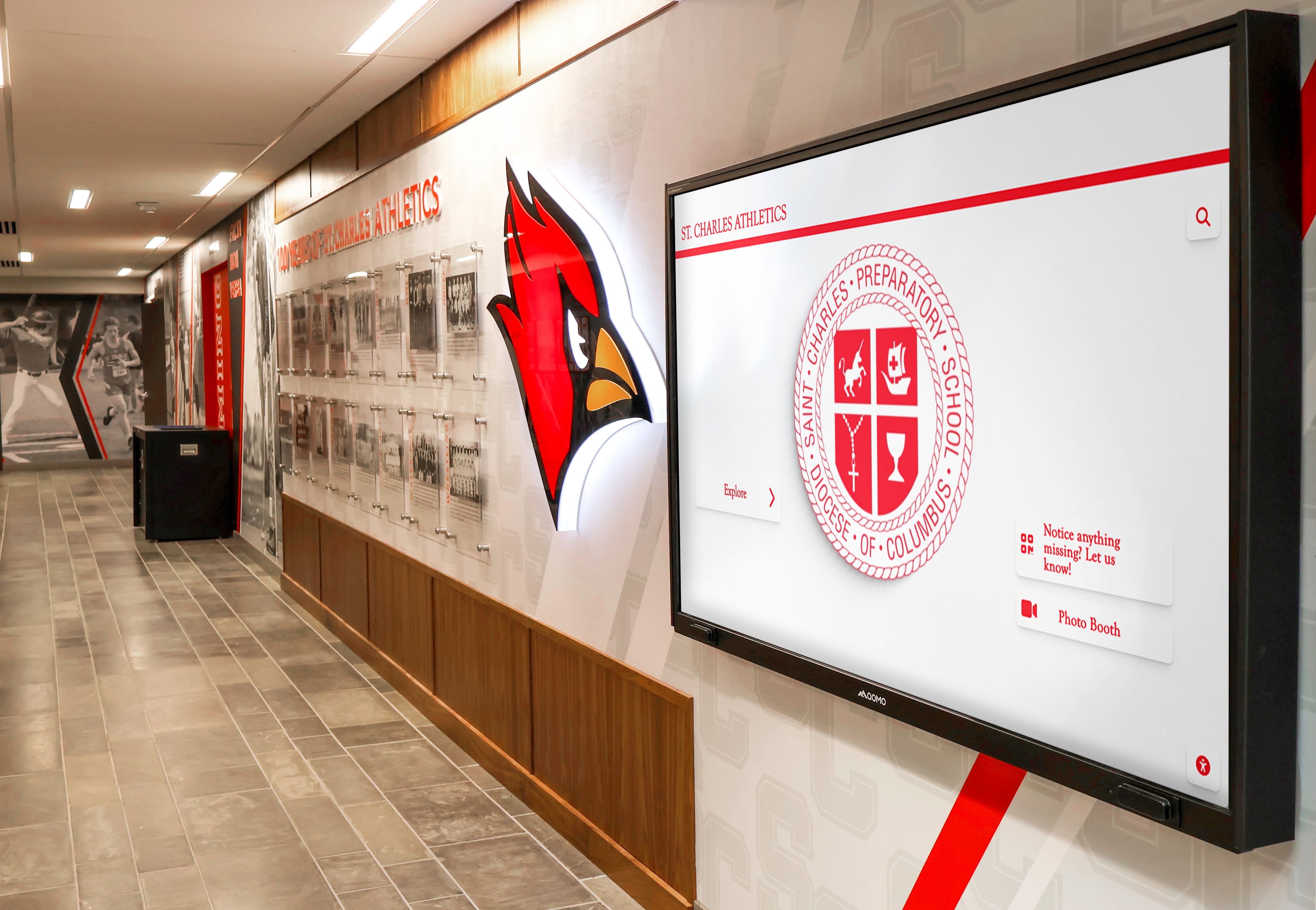
Sportsmanship and Character in Athletics: Not all athletic recognition should focus on winning. Awards celebrating sportsmanship, perseverance, leadership, dedication, and character demonstrate that athletic programs value personal development alongside competitive success. Character-based athletic recognition often resonates deeply with students and families who appreciate acknowledgment of qualities that extend beyond the playing field.
Character, Citizenship, and Personal Development
Character education and citizenship development represent core educational purposes alongside academic instruction. Recognition programs should explicitly celebrate character qualities schools aim to develop.
Core Character Values: Many schools implement character education programs emphasizing specific virtues like respect, responsibility, integrity, perseverance, courage, compassion, and gratitude. Character awards explicitly tied to these values reinforce that schools prioritize who students become as people, not just what they know academically. Character recognition helps make abstract values concrete by highlighting students demonstrating qualities in action.
Citizenship and Positive Behavior: Recognition for consistent demonstration of expected behaviors, following guidelines, treating others respectfully, and contributing to positive classroom and school environments acknowledges students who make schools more pleasant for everyone. Citizenship recognition supports schoolwide positive behavior systems while validating students who consistently do the right thing without fanfare.
Leadership and Positive Influence: Taking initiative, organizing others toward positive goals, accepting responsibility, mentoring peers, and positively influencing school culture represent leadership worthy of recognition. Leadership emerges in countless forms from formal student government to informal peer mentoring—all worthy of acknowledgment for students who help others and improve their communities.
Service, Volunteerism, and Community Contribution
Recognizing service contributions and volunteer work helps develop civic engagement, social responsibility, and commitment to collective welfare that extends beyond individual achievement.
Community Service Recognition: Track and celebrate student volunteer work through service recognition programs with tiered acknowledgment levels based on cumulative hours. Bronze, silver, gold, and platinum levels based on service hour thresholds create achievable goals that motivate ongoing engagement while honoring students who dedicate significant time to helping others.
Service Project Impact: Beyond hourly commitment, recognize significant impact through specific service projects. Students who organize food drives, lead environmental initiatives, coordinate fundraising campaigns, or create lasting community improvements deserve recognition for the tangible difference their efforts make regardless of exact hours invested.
Peer Support and Tutoring: Students who help classmates succeed through tutoring, peer mentoring, study group facilitation, or academic support contribute valuable service within school communities. Peer support recognition validates that helping others learn represents valued behavior that strengthens the entire school community.
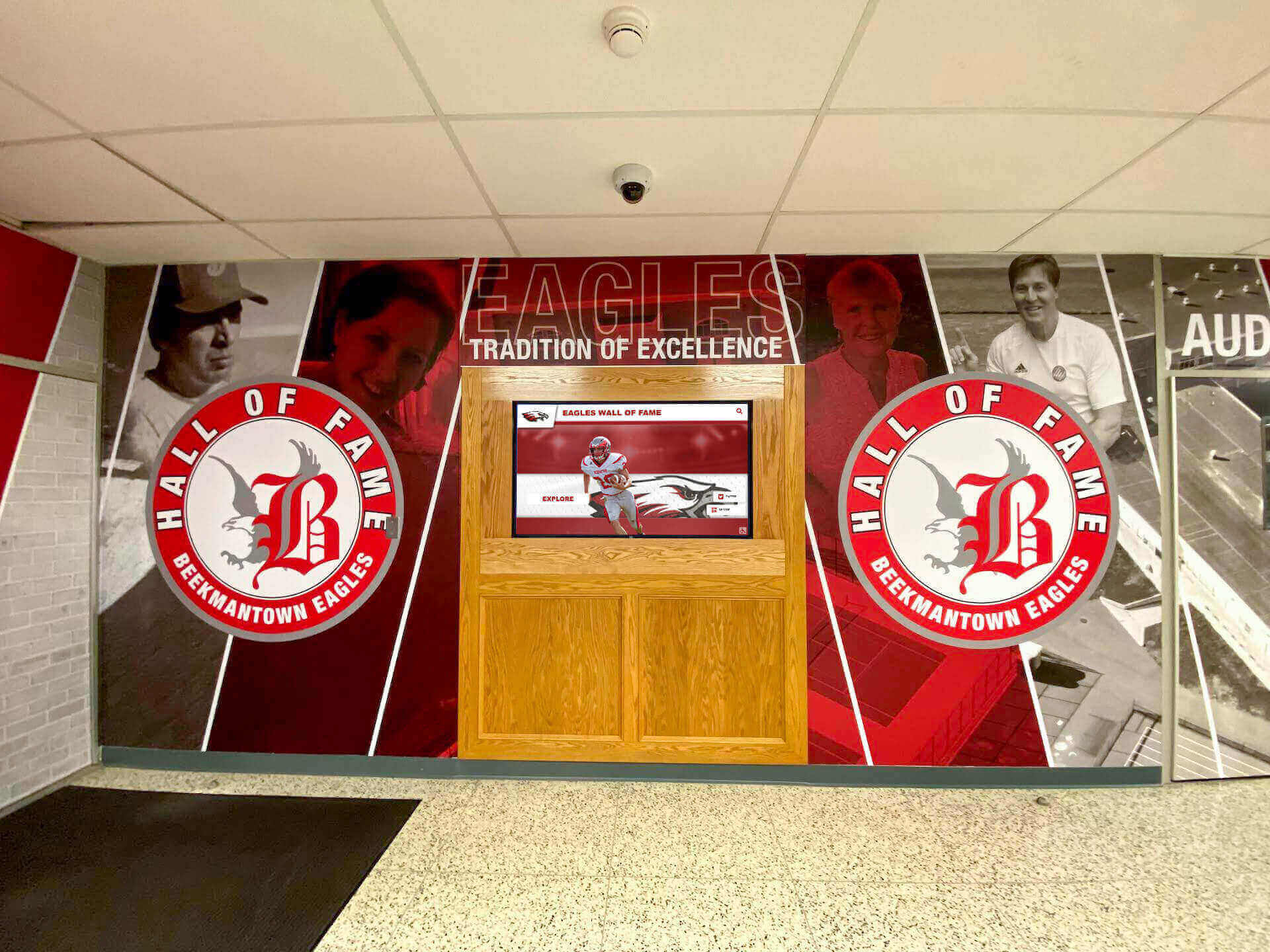
Fine Arts, Performing Arts, and Creative Achievement
Students excelling in visual arts, music, theater, dance, creative writing, and other creative disciplines deserve equal recognition alongside academic and athletic achievers.
Visual Arts Excellence: Recognition for outstanding artwork, participation in juried exhibitions, art competition successes, and creative expression through visual media validates artistic talents. Create dedicated gallery spaces showcasing student artwork throughout school years with rotating exhibitions ensuring many artists receive recognition while keeping displays fresh and engaging.
Performing Arts Achievement: Excellence in theater productions, musical performances, dance recitals, vocal competitions, and instrumental achievements deserves prominent celebration. Recording and sharing exceptional performances through video documentation preserves these accomplishments while making them accessible to wider audiences. Modern recognition displays can incorporate performance videos creating engaging multimedia recognition experiences.
Creative Writing and Literary Arts: Recognition for creative writing, poetry, journalism, literary magazine contributions, and written expression celebrates students with linguistic and narrative talents. Publishing student writing in school publications or digital platforms provides authentic audiences for creative work while validating literary achievement.
Competition and Festival Recognition: Students and ensembles earning superior ratings at competitions, gaining admission to honor ensembles, or receiving recognition at festivals and conferences deserve prominent acknowledgment. These external validations reflect well on programs and individual student excellence.
Specialized Achievement Categories
Beyond major recognition domains, specialized categories ensure comprehensive celebration of diverse accomplishments that contribute to school communities.
Perfect Attendance and Punctuality: Regular attendance and promptness demonstrate commitment to education. Attendance recognition acknowledges students and families who prioritize consistent school participation despite challenges making attendance difficult. Perfect attendance across semesters or school years represents significant achievement worthy of celebration.
Academic Perseverance and Resilience: Some students’ greatest achievements may not appear on traditional transcripts but demonstrate character and determination deserving recognition. Students maintaining academic engagement despite significant personal challenges, health issues, family difficulties, or other obstacles show resilience that merits acknowledgment.
Technology and Innovation: As digital skills become increasingly important, recognition for coding achievements, robotics competition success, digital design excellence, technology problem-solving, and innovative projects validates 21st-century skills essential for future success.
Career and Technical Education: Students excelling in career and technical education programs, earning industry certifications, demonstrating exceptional skill development, or achieving success in technical competitions deserve recognition equal to traditional academic and athletic honors. CTE recognition validates multiple pathways to success and career readiness.

Designing Effective Recognition Criteria and Selection Processes
Award categories mean little without transparent, fair criteria and selection processes that ensure recognition maintains credibility and motivational impact.
Establishing Clear, Measurable Criteria
Written Documentation: Create formal written documents clearly specifying what qualifies students for different recognition categories. Publish criteria publicly ensuring students, families, and staff understand exactly what earns recognition. Transparent criteria prevent perceptions that awards depend on favoritism, popularity, or arbitrary decisions rather than genuine accomplishment.
Quantitative Standards Where Feasible: Where possible, establish measurable criteria reducing subjectivity: minimum GPA thresholds, percentage improvement targets, attendance requirements, service hour minimums, specific competition placements, or documented behavioral standards. Quantitative standards make recognition feel more objective and fair while simplifying selection processes.
Qualitative Guidelines for Subjective Categories: Some valuable qualities resist simple quantification. For character-based or citizenship awards, develop detailed descriptions with concrete behavioral examples illustrating what qualities look like practically. Specific examples help nominators and selection committees apply criteria consistently across different students and situations.
Developmental Appropriateness: Consider separate recognition criteria for different grade levels accounting for developmental differences and appropriate expectations. Elementary recognition might emphasize foundational skills and positive behavior. Middle school awards could focus on character development during crucial adolescent years. High school recognition might connect to college and career readiness. Grade-level differentiation ensures recognition remains developmentally appropriate and realistically achievable.
Creating Fair, Inclusive Selection Processes
Multiple Nomination Sources: Effective selection processes incorporate input from multiple sources rather than depending on single perspectives:
- Teacher and staff nominations based on classroom observation and documentation
- Student self-nominations with supporting materials explaining qualifications
- Peer nominations for certain awards with appropriate oversight
- Automatic consideration based on quantitative data like grades, attendance, or test scores
- Parent or community member nominations for service or character awards
Multiple nomination sources help ensure recognition opportunities don’t depend solely on visibility to specific teachers or administrators, reducing the risk that quiet students who don’t naturally draw attention get overlooked.
Diverse Selection Committees: Form selection committees with representation from different departments, grade levels, and perspectives. Diverse committees reduce individual bias while ensuring various viewpoints inform recognition decisions. Include representatives familiar with different student populations such as special education, English learner programs, and various demographic groups.
Documentation Requirements: Require nominators to provide specific evidence supporting nominations rather than general praise. Concrete examples, documented incidents, quantitative data, and detailed descriptions help committees evaluate nominations fairly and consistently. Documentation also provides rich material for recognition ceremonies and displays, making acknowledgment more meaningful and specific.
Appeals and Review Processes: Establish procedures for addressing concerns about selection decisions when legitimate questions arise. While not every disappointed student or family warrants changing decisions, transparent review processes demonstrate that schools take fairness seriously and will reconsider when presented with compelling new information.
Monitoring for Equity and Inclusivity
Recognition Distribution Analysis: Systematically track recognition patterns over time to identify whether certain student groups receive disproportionate recognition or face systematic exclusion. Analyze distribution across:
- Demographics including race, ethnicity, gender, and socioeconomic status
- Academic programs such as general education, special education, gifted programs, and English learner services
- Grade levels and age groups
- Activity participation patterns and interest areas
Data revealing recognition gaps enables intentional efforts ensuring all students have reasonable pathways to acknowledgment through inclusive program design adjustments.
Addressing Unintentional Barriers: Selection criteria and processes can inadvertently favor students with certain advantages while creating barriers for others. Consider whether criteria require resources, opportunities, or support not available to all students. Service hour requirements may disadvantage students working part-time jobs or providing family care. Extracurricular leadership expectations may exclude students with transportation challenges or family obligations. Thoughtful criteria account for varying student circumstances.
Creating Tiered Recognition: Consider multi-tier recognition systems acknowledging different achievement levels rather than single awards only highest achievers can earn. Honors, high honors, and highest honors systems allow more students to receive meaningful recognition appropriate to their accomplishment levels. Tiered approaches reduce all-or-nothing dynamics where students receive either top awards or nothing.

Modern Approaches to Recognition Presentation and Preservation
How schools present and preserve recognition determines whether programs create genuine motivational impact or feel like forgotten rituals with minimal lasting influence.
Beyond Paper Certificates: Engaging Recognition Experiences
Traditional recognition programs relied heavily on printed certificates handed out at year-end assemblies, briefly acknowledged before being filed away and forgotten. Modern recognition should incorporate multiple touchpoints creating deeper, more lasting impact.
Interactive Digital Recognition Displays: Digital touchscreen displays provide engaging, permanent recognition platforms that resonate with digital-native students while preserving achievement history indefinitely. Digital displays enable:
- Comprehensive profiles with photographs, achievement descriptions, and personal stories
- Searchable databases allowing visitors to find specific students, years, or categories
- Video content including acceptance speeches, performance highlights, and celebration footage
- Historical archives showing decades of recognition history and achievement evolution
- Interactive exploration where current students can browse peers’ accomplishments
- Easy annual updates adding new recipients without physical space constraints or material costs
Schools implementing comprehensive touchscreen recognition displays report increased visitor engagement, stronger alumni connections, and enhanced school pride among current students who see their potential future accomplishments documented professionally.
Meaningful Recognition Ceremonies: While digital preservation matters, live recognition ceremonies create important celebration moments when designed thoughtfully:
- Specific achievement descriptions rather than just reading names from lists
- Opportunities for recipients to address audiences or share brief reflections
- Teacher or nominator remarks explaining why students earned recognition
- Professional presentation creating special experiences rather than rushed announcements
- Family involvement allowing parents and supporters to celebrate achievements together
- Photography and videography documenting celebrations for digital displays and school communications
Ceremonies should balance comprehensiveness with engagement, perhaps creating multiple focused events rather than single marathon assemblies where individual recognition becomes brief and unmemorable.
Strategic Social Media Recognition: Social media recognition amplifies acknowledgment beyond school walls while engaging families and broader communities:
- Individual posts celebrating each recognized student with photos and achievement descriptions
- Video compilations featuring highlights from recognition ceremonies
- Stories showcasing behind-the-scenes preparation and celebration moments
- Family and community congratulations through comments and shares
- Alumni engagement showing graduates celebrating current student success
Ensure appropriate permissions and privacy protections before featuring students publicly. Many schools find that social media recognition generates tremendous community engagement and institutional pride.
Physical Recognition Displays: Traditional displays retain value when executed thoughtfully as complements to digital recognition:
- Trophy cases highlighting recent recipients alongside historical achievements
- Hallway displays celebrating current year accomplishments in high-traffic areas
- Classroom recognition boards maintained by teachers throughout the year
- Department-specific displays honoring subject area or program excellence
However, digital recognition offers significant advantages including unlimited space, easy annual updates, richer multimedia content, and superior engagement that traditional static displays cannot match.
Leveraging Technology for Enhanced Recognition Impact
Modern technology transforms how schools implement, communicate, and preserve recognition programs while reducing administrative burden and increasing student engagement.
Professional Content Management Systems: Purpose-built recognition platforms provide comprehensive content management systems simplifying program administration:
- Intuitive interfaces allowing easy profile creation and updates by non-technical staff
- Template systems ensuring visual consistency across years and categories
- Media libraries organizing photographs, videos, and documents efficiently
- Workflow tools managing nomination, review, and selection processes digitally
- Communication systems sending automated notifications to students, families, and staff
- Analytics tracking engagement patterns and recognition distribution for program improvement
- Archive functionality preserving complete historical records indefinitely
Solutions like Rocket Alumni Solutions provide specifically designed platforms for educational recognition, making implementation straightforward for schools without extensive technical expertise or IT resources.
Integration with School Systems: Sophisticated implementations connect recognition programs to broader school technology ecosystems:
- Student information systems providing academic data for automatic eligibility determination
- Digital asset management systems organizing photographs and videos across recognition programs
- Website integration publishing recognition content automatically to school sites
- Social media management tools enabling coordinated communication across platforms
- Alumni databases maintaining current information about award recipients after graduation
Integration reduces duplicate data entry while ensuring accuracy and consistency across school communication channels, saving staff time while improving information quality.
Analytics and Continuous Improvement: Digital recognition systems provide valuable data enabling program assessment and refinement:
- Recognition distribution patterns identifying gaps, inequities, or overrepresentation
- Engagement metrics showing how students and visitors interact with displays
- Most-viewed recognition categories and recipients revealing high-interest content
- Search patterns indicating what information visitors seek most frequently
- Time-based engagement showing when displays receive greatest attention
Data-informed decisions help optimize programs ensuring they achieve intended goals while addressing unintended gaps or biases that might otherwise go unnoticed.
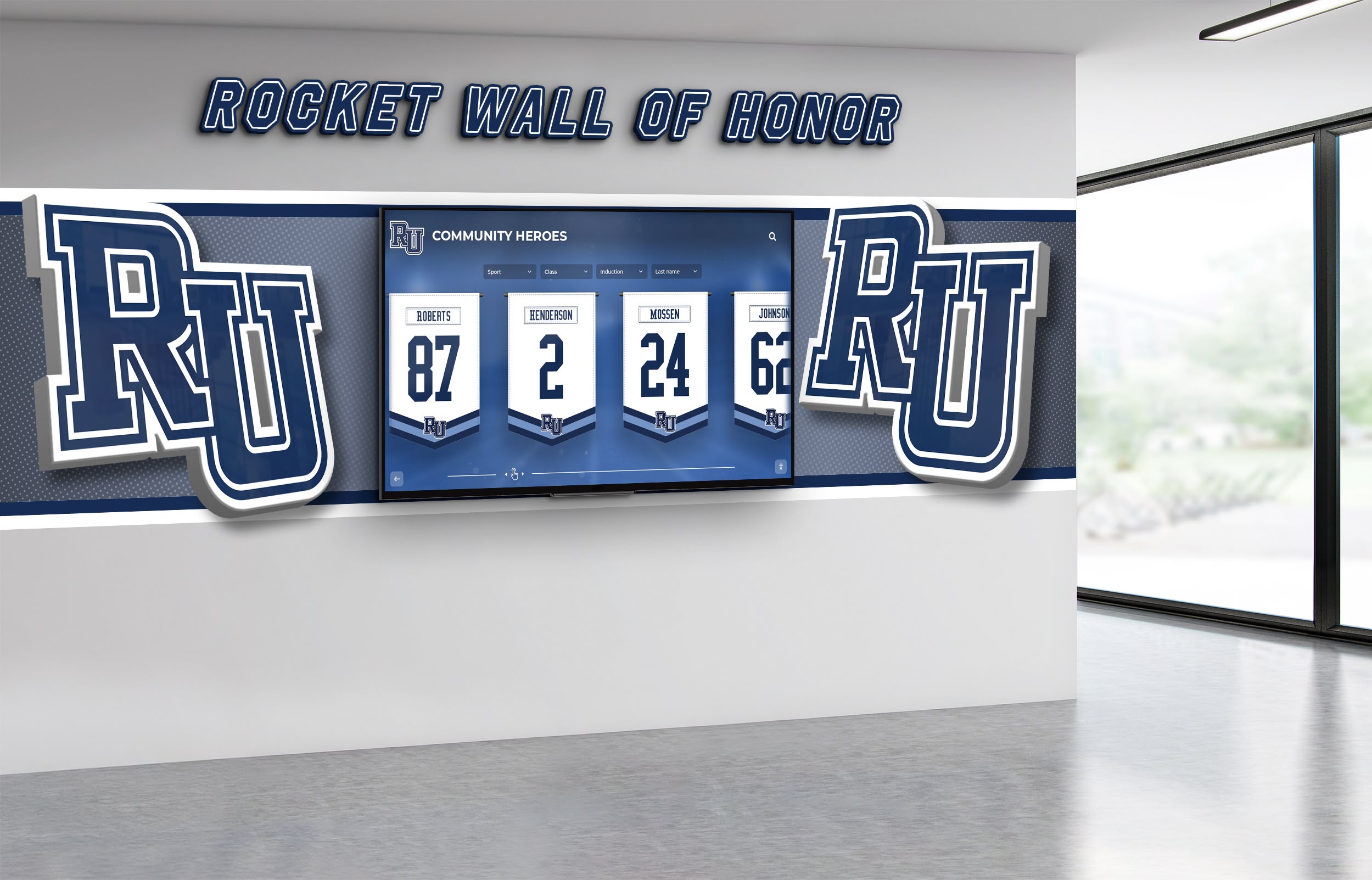
Building Sustainable School Recognition Programs
Successful recognition programs require thoughtful planning and ongoing commitment ensuring sustainable, effective implementation that continues across leadership changes and competing priorities.
Implementation Planning and Launch Timeline
Phase 1: Assessment and Goal Setting (Months 1-2):
- Form recognition program planning committee with diverse stakeholders including administrators, teachers, students, parents, and community members
- Research existing recognition practices identifying what works well and what needs improvement
- Survey students, staff, families, and alumni about recognition priorities and preferences
- Define clear program goals and intended outcomes tied to school improvement priorities
- Review historical recognition distribution data identifying current gaps, inequities, or overrepresentation
Phase 2: Program Design (Months 2-4):
- Establish recognition categories reflecting comprehensive achievement types aligned with school values
- Develop selection criteria and detailed documentation for each category
- Create nomination and selection processes with clear timelines and responsibilities
- Design communication strategies for promoting programs to students, families, and staff
- Determine ceremony formats, scheduling, and production requirements
- Develop comprehensive program documentation and staff training materials
Phase 3: Technology Selection (Months 3-4):
- Evaluate digital recognition display options if implementing technology solutions
- Compare platforms considering features, costs, vendor support, and ease of use
- Select recognition software and hardware appropriate to needs, budget, and technical capacity
- Plan installation locations considering visibility, accessibility, and network connectivity
- Coordinate with IT staff on technical implementation details and ongoing support
Phase 4: Content Development (Months 4-5):
- Establish photography standards and workflows for capturing quality images of recipients
- Create content templates ensuring visual consistency across categories and years
- Develop media libraries and organizational systems for efficient content management
- Train staff on content creation, system operation, and maintenance procedures
- Prepare historical content if including past recognition recipients in initial displays
Phase 5: Pilot Implementation (Month 5):
- Conduct pilot testing with small group before full school-wide launch
- Gather systematic feedback from pilot participants about processes and experiences
- Identify and address logistical challenges, technical issues, or process problems
- Refine procedures, materials, and systems based on pilot experiences
- Make necessary adjustments before broader implementation
Phase 6: Full Launch and Ongoing Operation (Month 6+):
- Announce program school-wide with clear communication to all stakeholders
- Implement nomination and selection processes according to established timelines
- Conduct first recognition ceremonies celebrating inaugural recipients with appropriate fanfare
- Launch digital recognition displays if implementing technology components
- Monitor implementation systematically and gather ongoing feedback from all stakeholder groups
- Make iterative improvements based on experience, data, and evolving needs
Plan minimum six months from initial planning to full program launch allowing thorough development, meaningful stakeholder engagement, and adequate system preparation without rushing implementation.
Building and Maintaining Stakeholder Support
Administrative Leadership Commitment: Programs require visible administrative support including adequate resource allocation, staff time provision, public endorsement and promotion, personal participation in ceremonies and events, and sustained commitment across years despite changing priorities. Leadership commitment signals that recognition matters institutionally and ensures programs survive budget pressures and competing demands.
Teacher and Staff Buy-In: Teachers and staff typically implement most recognition activities through nominations, documentation, ceremony participation, and student encouragement. Build buy-in by:
- Involving teachers meaningfully in program design ensuring practical workability
- Creating clear, efficient processes minimizing unnecessary time burden
- Providing recognition of staff effort and contributions to program success
- Demonstrating through data and stories that recognition improves school climate and student motivation
- Training staff thoroughly on nomination processes, criteria application, and system use
Student Engagement and Voice: Students represent ultimate recognition recipients and should influence program design:
- Gather student input about meaningful recognition categories and fair criteria
- Include student representatives on planning committees where developmentally appropriate
- Communicate clearly helping students understand recognition pathways and expectations
- Ensure recognition feels authentic and meaningful from student perspectives rather than adult-imposed requirements
- Create opportunities for peer nominations in appropriate categories
Family Communication and Involvement: Help families understand and support recognition programs through:
- Clear explanation of program purposes, categories, and selection processes
- Information about how students can work toward earning different types of recognition
- Invitations to participate meaningfully in ceremonies and celebrations
- Regular communication celebrating recognized students throughout school year
- Opportunities for family input on program development, refinement, and improvement
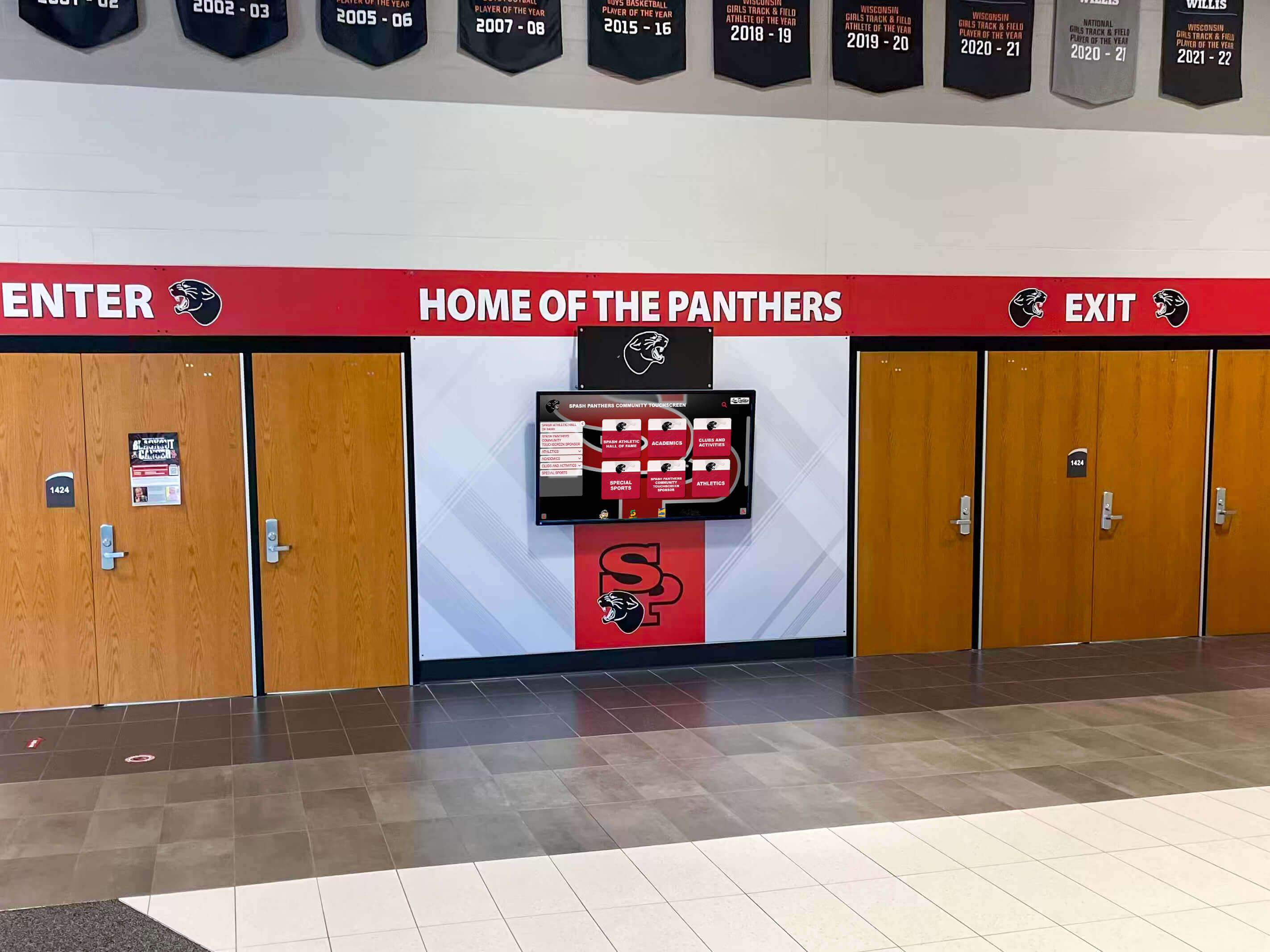
Budget and Resource Planning
Initial Implementation Costs:
- Technology platform licensing or purchase if implementing digital recognition displays
- Display hardware including touchscreens, mounts, stands, and network equipment
- Professional photography equipment or contracted services for recipient photos
- Ceremony costs including venue, sound/visual equipment, programs, and refreshments
- Recognition materials including certificates, medals, trophies, plaques, or other awards
- Staff training time and program development professional development
- Launch event and promotional materials introducing programs to school communities
Ongoing Operating Costs:
- Annual software licensing or subscription fees for digital platforms
- Recognition materials for new award recipients each year
- Photography and content development staff time or contracted services
- Ceremony expenses for annual recognition events
- Communication and promotion through various channels
- Program coordination and administrative staff time
- Periodic hardware maintenance, updates, or eventual replacement
Funding Sources:
- School operating budgets with dedicated line items for recognition programs
- Parent-teacher organization support and targeted fundraising
- Community business sponsorships and partnership support
- Education foundation grants focused on school culture and student success
- Alumni association contributions supporting current student recognition
- Title funds supporting positive school culture and engagement initiatives
- Memorial gifts and donations designated for recognition programs
Cost-Effective Implementation Approaches: Schools with limited budgets can implement effective programs through:
- Phased implementation starting with core recognition categories and expanding gradually
- Hybrid approaches combining some digital and traditional elements based on priorities
- Student journalism, yearbook, or media classes creating recognition content as authentic academic work
- Volunteer photographers from parent community or local professional photographers offering pro bono services
- Simple but meaningful ceremony formats without expensive production elements
- Starting with cost-effective digital platforms and upgrading as programs mature
Technology solutions like digital recognition displays often prove cost-effective long-term by reducing ongoing material costs for plaques and certificates while providing richer, more engaging recognition experiences than traditional approaches.
Measuring Success and Driving Continuous Improvement
Effective recognition programs require ongoing assessment ensuring they achieve intended purposes while adapting based on experience, feedback, and changing school community needs.
Defining Success Metrics and Key Indicators
Participation and Distribution Metrics:
- Number and diversity of nominations received across categories and sources
- Percentage of student body receiving some form of recognition annually
- Distribution of recognition across grades, demographics, academic programs, and categories
- Nomination source patterns showing breadth of teacher and staff participation
- Selection committee participation, engagement, and process completion rates
Student Outcome Indicators: While direct attribution proves difficult, monitor trends potentially connected to recognition programs:
- Student attendance rates and chronic absenteeism patterns
- Behavioral referral frequency, severity, and types across student populations
- Academic achievement trends including grades, test scores, and course completion
- Activity and extracurricular participation rates in various programs
- School climate survey results measuring sense of belonging and connection
- Student reports of motivation, engagement, and school pride
- Post-graduation indicators including college enrollment and career success
Stakeholder Satisfaction and Feedback: Gather qualitative input about program effectiveness through:
- Student surveys about recognition fairness, meaningfulness, and motivational impact
- Family satisfaction with communication, ceremonies, and celebration quality
- Teacher observations about motivational effects and student engagement changes
- Administrator assessment of culture, climate, and school pride effects
- Alumni perspectives on lasting recognition impact and continued connection
- Community feedback about school reputation and perception
Recognition Display Engagement: For schools implementing digital displays, technology enables tracking:
- Visitor interaction frequency, duration, and patterns
- Content searches and most frequently viewed categories or recipients
- Peak engagement times and traffic patterns throughout days and years
- User feedback and comments when systems include feedback mechanisms
- Social media sharing and community response to recognition content
Implementing Continuous Improvement Processes
Annual Comprehensive Program Review: Conduct systematic assessment examining:
- Recognition distribution data identifying gaps, inequities, patterns, or overrepresentation requiring attention
- Engagement metrics across various program components understanding what resonates and what needs improvement
- Systematic feedback from all stakeholder groups collected through surveys, focus groups, and informal input
- Alignment between stated program goals and actual outcomes based on available evidence
- Specific, actionable improvement opportunities for the following year with clear implementation plans
Evidence-Based Program Refinement: Make data-informed improvements such as:
- Adding or modifying recognition categories addressing identified gaps or emerging needs
- Adjusting selection criteria better balancing meaningful standards with realistic accessibility
- Refining nomination processes improving fairness, efficiency, or participation breadth
- Enhancing ceremony formats increasing engagement, meaning, and family participation
- Improving communication strategies reaching students and families more effectively
- Expanding recognition to include underrepresented student groups or achievement types
- Streamlining administrative processes reducing unnecessary burden on staff
Documentation and Institutional Knowledge Preservation: Ensure program continuity through:
- Comprehensive program handbooks capturing detailed procedures, criteria, and refinements over time
- Best practice documentation helping new staff understand program philosophy and effective approaches
- Historical archives showing program evolution and complete records of past recipients
- Success stories illustrating recognition impact on individual students and overall school culture
- Challenge documentation helping future leaders understand problems encountered and solutions developed
Recognition programs should evolve continuously based on accumulated experience rather than remaining static after initial implementation, constantly adapting to changing student needs, educational priorities, community expectations, and available technologies.
Addressing Common Challenges and Building Program Resilience
Even well-designed recognition programs face implementation challenges. Anticipating and proactively addressing common concerns helps programs succeed long-term despite obstacles.
Overcoming Recognition Program Pitfalls
Same Students Repeatedly Recognized: Common complaints involve identical students receiving multiple awards year after year while many students never experience recognition. Address through:
- Multiple diverse recognition categories creating varied opportunities beyond traditional academics and athletics
- Limiting number of awards any single student can receive annually or within categories
- Improvement and growth categories explicitly accessible to students at different achievement levels
- Deliberate monitoring of distribution patterns identifying overrepresentation
- Category rotation ensuring different achievement dimensions receive emphasis across years
Perceived Favoritism or Selection Bias: Recognition programs risk appearing biased when selection processes lack transparency or certain student groups receive disproportionate acknowledgment. Prevent perceptions of favoritism through:
- Clear, published selection criteria applied consistently without exceptions
- Diverse selection committees with multiple perspectives and balanced representation
- Documentation of specific accomplishments justifying each recognition decision
- Multiple nomination sources beyond individual teacher favorites or administrator selections
- Regular review of distribution patterns across demographics with transparent reporting
Exclusive Rather Than Inclusive Culture: Recognition should inspire broad student engagement rather than discouraging most students who perceive awards as impossible to achieve. Create inclusive recognition through:
- Multiple award categories and achievement level tiers
- Recognition for improvement, effort, and growth alongside absolute achievement
- Celebration of diverse talents across academic, artistic, athletic, service, and character domains
- Clear pathways helping all students understand how they could realistically earn recognition
- Sufficient recognition volume ensuring most students personally know peers who received awards
Administrative and Staff Time Burden: Programs consuming excessive staff time often become unsustainable, leading to inconsistent implementation or eventual abandonment. Manage workload through:
- Digital platforms automating nomination, selection, documentation, and communication processes
- Clear, streamlined procedures reducing unnecessary complexity and redundant work
- Designated program coordinators with specific responsibilities rather than adding duties to overwhelmed teachers
- Student involvement in content creation as authentic learning connected to coursework
- Efficient workflows for photography, profile creation, ceremony planning, and ongoing maintenance
Maintaining Meaningful Standards Without Grade Inflation: When too many students receive recognition or standards become too lenient, awards lose motivational value and credibility. Maintain meaningful recognition through:
- Consistent application of established criteria regardless of pressures to include more students
- Periodic criteria review ensuring standards remain appropriately rigorous without becoming impossible
- Focus on quality over quantity in recognition volume and selection
- Emphasis on genuine accomplishments requiring substantial effort rather than mere participation
- Willingness to have some years with fewer recipients when fewer students meet established criteria
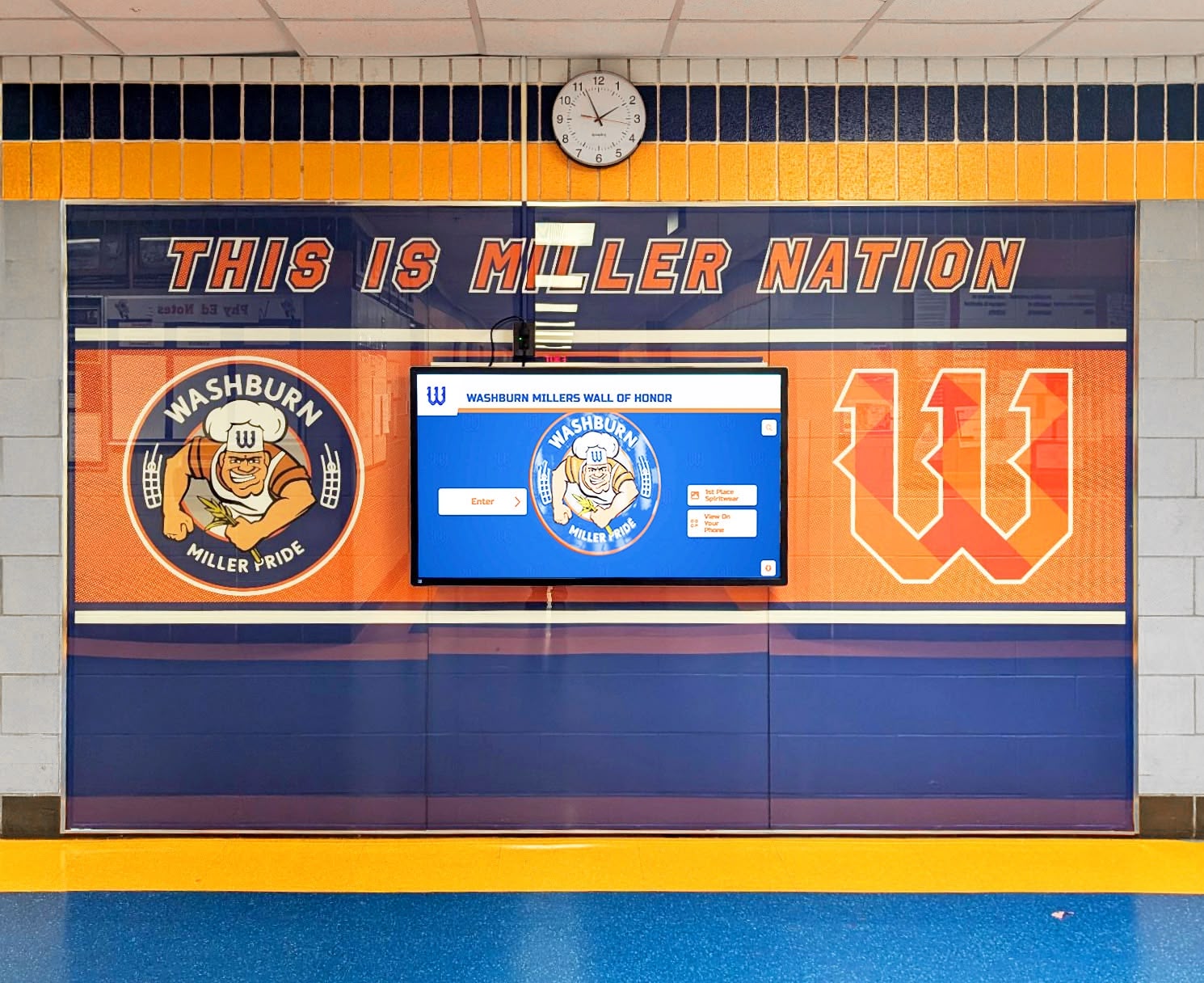
Conclusion: Building Excellence Through Meaningful Recognition
School achievement recognition represents far more than annual ceremonies and certificates collecting dust in drawers. When implemented thoughtfully with comprehensive categories, transparent criteria, engaging presentation, and sustainable practices, recognition programs create consistent systems that validate diverse student accomplishments, motivate continued excellence and effort across student populations, reinforce positive behaviors and character development throughout school communities, build institutional pride and strengthen connections among students, staff, families, and alumni, and preserve achievement history inspiring current and future students through visible examples of success.
Effective modern recognition programs balance tradition with innovation, honor absolute achievement alongside meaningful growth and improvement, celebrate academic excellence while equally recognizing character, service, arts, and athletics, maintain meaningful standards while creating genuinely inclusive opportunities for diverse students, leverage digital technology for superior engagement and permanent preservation, and provide both immediate motivational impact and long-term cultural influence that shapes school identity.
The most successful school achievement recognition programs share common characteristics: comprehensive categories celebrating multiple forms of excellence beyond narrow definitions, clear and transparent selection criteria applied consistently and fairly, engaging presentation formats resonating with contemporary students and families, meaningful preservation through modern digital platforms ensuring lasting impact, authentic acknowledgment with specific accomplishment descriptions rather than generic praise, inclusive approaches ensuring all students see realistic pathways to recognition, strong connections to school values and educational missions, active family and community engagement in celebrations and support, continuous improvement based on evidence and stakeholder feedback, and sustained institutional commitment across leadership changes and budget challenges.
Key Principles for Recognition Program Success:
- Establish comprehensive recognition categories celebrating diverse achievement types that matter
- Create clear, transparent criteria balancing meaningful standards with realistic accessibility
- Implement modern digital platforms engaging students while preserving recognition permanently
- Provide specific, authentic acknowledgment rather than generic or superficial praise
- Monitor distribution patterns ensuring equitable recognition opportunities for all students
- Connect recognition explicitly to school values, mission, and character development priorities
- Engage families and communities meaningfully in recognition celebrations and ongoing support
- Integrate recognition programs with broader positive culture and climate initiatives
- Assess effectiveness systematically and continuously improve based on solid evidence
- Maintain sustained commitment as core component of school culture and operations
The investment schools make in comprehensive recognition programs pays substantial dividends through enhanced student motivation, improved behavior and school climate, increased academic achievement and engagement, stronger school connections and sense of belonging, greater community support and positive reputation, and most importantly, students who develop positive identities and understand that their efforts, character, and accomplishments truly matter to caring adults and supportive communities.
Ready to transform how your school celebrates achievement and builds excellence culture? Modern solutions like Rocket Alumni Solutions provide comprehensive platforms designed specifically for educational recognition, offering intuitive content management, engaging interactive displays, unlimited digital space for comprehensive recognition, proven approaches that help schools build positive cultures, and ongoing support ensuring successful implementation and sustained program success over years.
Your students achieve remarkable things every day across academics, athletics, arts, service, leadership, and character development. Meaningful recognition programs ensure those achievements receive the celebration that inspires continued excellence, honors diverse talents and contributions, validates effort and growth, creates lasting institutional pride, and builds school communities where all students feel valued, connected, and motivated to pursue their highest potential.




































